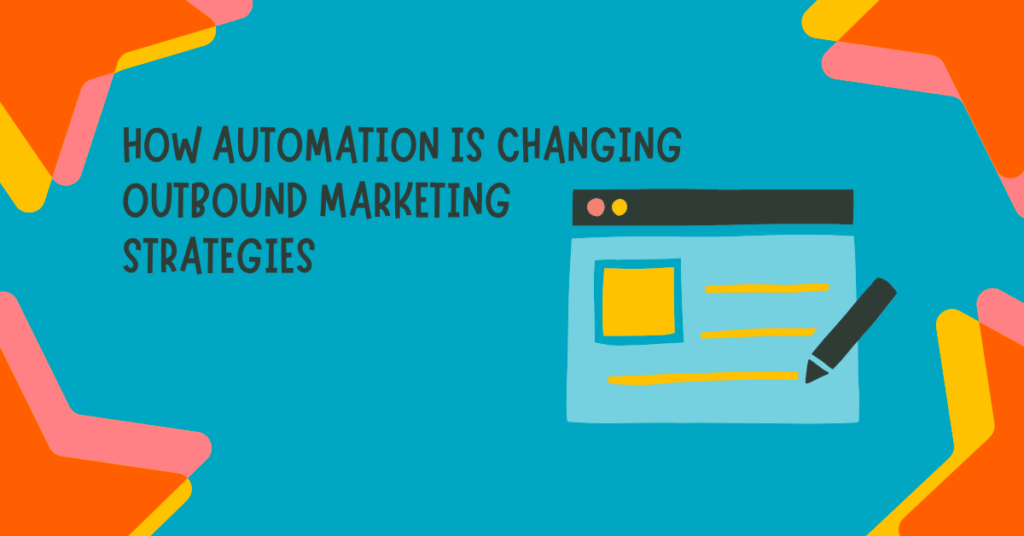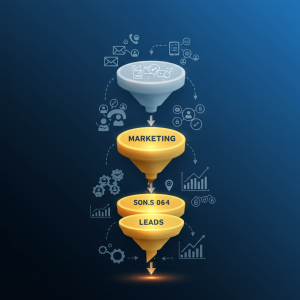How Automation Is Changing Outbound Marketing Strategies

Marketing has always been about finding and connecting with the right audience. But over the years, the tools and strategies used to accomplish this have evolved drastically. One of the most significant shifts in recent years is the impact of automation on outbound marketing. Automation not only streamlines processes but also provides marketers with data-driven insights that refine and enhance their campaigns.
Whether you’re new to outbound marketing or looking to stay ahead of trends, this guide will showcase how automation is reshaping the strategy playbook and helping businesses get better results without burning through resources.
The Growing Role of Automation in Outbound Marketing
Outbound marketing refers to any method by which you actively reach out to potential customers, rather than waiting for them to come to you. This includes email campaigns, cold calls, direct mail, display ads, and more. Traditionally, outbound marketing could be time-consuming and resource-heavy. Automation, however, is revolutionizing this by enabling campaigns to be executed with speed, precision, and scalability.
Here’s an overview of what automation brings to the table in outbound marketing:
- Efficiency – Automation takes repetitive tasks off marketers’ plates, ensuring faster execution while saving valuable time and energy.
- Personalization – Advanced tools can analyze behavior and preferences, tailoring communication for higher engagement.
- Consistency – Automation ensures that multi-touch campaigns are executed without hiccups, fostering reliable lead nurturing.
- Scalability – Whether reaching ten prospects or ten thousand, automation ensures that outbound efforts scale effortlessly.
How Automation Tools Are Transforming Each Stage of Outbound Marketing
1. Lead Generation
Finding potential customers was historically an arduous task, requiring hours of research, segmentation, and manual outreach. Automation tools like LinkedIn Sales Navigator, ZoomInfo, and Leadfeeder now simplify audience discovery.

Key advantages:
- Improved accuracy in targeting the right audiences using filters based on location, profession, or industry.
- Real-time updates so your lead lists remain current and actionable.
- Integration with CRM tools ensures seamless transfer of lead information into the sales pipeline.
Example:
Imagine a SaaS company looking to reach decision-makers in the healthcare space. Automation platforms could scan LinkedIn profiles or company directories to build a complete list within minutes while excluding outdated or irrelevant contacts.
2. Personalized Outreach
“Spray and pray” in outbound marketing has been replaced by targeted, personalized messaging. Automation platforms like HubSpot, ActiveCampaign, and Mailchimp make it easier to send hyper-relevant emails at scale.
Automation in action:
- Add personalization tokens to emails (e.g., recipient’s first name or company name).
- Create behavior-triggered workflows, sending emails or messages based on recipient actions (like downloading a brochure or visiting a pricing page).
- A/B test subject lines, formats, and CTAs for continuous optimization.
Relevant numbers show this approach works. According to a study by Campaign Monitor, personalized emails drive 6x higher transaction rates compared to general emails.
3. Follow-Ups Made Easy
How many sales fall through because follow-ups are forgotten? Enter automation. Following up at regular intervals or after certain triggers can now be automated, ensuring that no lead goes cold.
Key benefits of automated follow-ups:
- Send reminders, updates, or check-ins without manual effort.
- Incorporate drip campaigns that nurture leads over time.
- Schedule follow-ups dynamically based on response times or previous interactions.
For example, if a prospect downloads a whitepaper but doesn’t respond to your first email, automation can send a friendly reminder or even an additional resource a week later.
4. Data-Driven Decision Making
Automation tools don’t just execute outbound marketing initiatives; they measure their success as well. Platforms such as Marketo, Pardot, and Salesforce provide dashboards that track every email open, ad click, or website visit.
Metrics you can track include:
- Click-through rates (CTR): Who’s interacting with your messages?
- Conversion rates: Which messages successfully lead to the next stage of the funnel?
- Cost per acquisition (CPA): How much you’re spending to gain a new customer.
Actionable insights, based on these metrics, allow marketers to refine messaging, adjust targeting, and focus on high-performing strategies, further increasing ROI.
5. Scalable Multichannel Campaigns
Modern outbound marketing is no longer restricted to a single channel. Automation empowers marketers to engage audiences seamlessly across emails, social media, SMS, and paid ads with consistent messaging.
Example:
- A lead engages with a Facebook ad → Automation adds them to your email workflow → A triggered email offers an exclusive webinar invite.
- After attending the webinar, they are offered a personalized discount or demo via SMS.
By combining channels strategically, you can significantly boost touchpoints without overburdening your marketing team.
Overcoming the Challenges of Automation in Outbound Marketing
While automation is powerful, it’s not without its challenges. Here’s how to tackle common pitfalls:
- Lack of human touch: Maintain balance by integrating conversational elements into automated emails or messages to feel authentic.
- Over-reliance on templates: Regularly refresh templates to ensure content doesn’t feel generic or repetitive.
- Data security concerns: Only use GDPR-compliant tools and regularly audit your systems to protect customer data.
Why Automation Is Essential for Your Marketing Future
Outbound marketing will always have a place in your growth strategy, but automation is turning it into a far more efficient and powerful process. By adopting automation, businesses are not only saving time and resources but also driving better customer interactions, personalization, and ROI.
At its core, automation allows marketers to focus on what truly matters—fostering genuine connections and delivering value to customers.
If you’re looking to transform how your business approaches outbound marketing, now is the time to explore automation. Start small by optimizing one process, then scale as needed.





